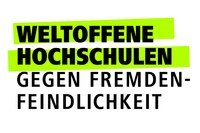Promotionsvorhaben
Multi-Modal Cochlea Images Registration, Fusion, Segmentation and Analysis
Name
Ibraheem Al-Dhamari
Status
Abgeschlossen
Abschluss der Promotion
Erstbetreuer*in
Prof. Dr.-Ing. Dietrich Paulus
Efficient Cochlear Implant (CI) surgery requires prior knowledge of the cochlea’s size and its characteristics. This information helps to select suitable implants for different patients. Registered and fused images helps doctors by providing more informative image that takes advantages of different modalities. The cochlea’s small size and complex structure, in addition to the different resolutions and head positions during imaging, reveals a big challenge for the automated registration of the different image modalities. To obtain an automatic measurement of the cochlea length and the volume size, a segmentation method of cochlea medical images is needed.
The goal of this dissertation is to introduce new practical and automatic algorithms for the human cochlea multi-modal 3D image registration, fusion, segmentation and analysis. Two novel methods for automatic cochlea image registration (ACIR) and automatic cochlea analysis (ACA) are introduced. The proposed methods crop the input images to the cochlea part and then align the cropped images to obtain the optimal transformation. After that, this transformation is used to align the original images. ACIR and ACA use Mattes mutual information as similarity metric, the adaptive stochastic gradient descent (ASGD) or the stochastic limited memory Broyden–Fletcher–Goldfarb–Shanno (s-LBFGS) optimizer to estimate the parameters of 3D rigid transform. The second stage of non-rigid registration estimates B-spline coefficients that are used in an atlas-model-based segmentation to extract cochlea scalae and the relative measurements of the in- put image. The image which has segmentation is aligned to the input image to obtain the non-rigid transformation. After that the segmentation of the first image, in addition to point-models are transformed to the input image. The detailed transformed segmentation provides the scala volume size. Using the transformed point-models, the A-value, the central scala lengths, the lateral and the organ of corti scala tympani lengths are computed.
The methods have been tested using clinical 3D images of total 66 patients: from Germany (41 patients) and Egypt (25 patients). The patients are of different ages and gender. The number of images used in the experiments is 217, which are multi-modal 3D clinical images from CT, CBCT, and MRI scanners.
The proposed methods are compared to the state of the arts optimizers related medical image registration methods e.g. fast adaptive stochastic gradient descent (FASGD) and efficient preconditioned stochastic gradient descent (EPSGD). The comparison used the root mean squared distance (RMSE) between the ground truth landmarks and the resulted landmarks. The landmarks are located manually by two experts to represent the round window and the top of the cochlea. After obtaining the transformation using ACIR, the landmarks of the moving image are transformed using the resulted transformation and RMSE of the transformed landmarks, and at the same time the fixed image landmarks are computed. I also used the active length of the cochlea implant electrodes to compute the error aroused by the image artifact, and I found out an error ranged from 0.5 mm to 1.12 mm.
ACIR method’s RMSE average was 0.36 mm with a standard deviation (SD) of 0.17 mm. The total time average required for registration of an image pair using ACIR was 4.62 seconds with SD of 1.19 seconds. All experiments are repeated 3 times for justifications. The one way Analysis of Variance (ANOVA) shows high p-value of 1.0 and low Levene and F scores of 0.0 which means there is no difference among the three repeated image registration experiments. Comparing the RMSE of ACIR2017 and ACIR2020 using T-test shows low p-value of 0.0 and F-score of 13.22 which means there are equal variances with 0.95% confident interval.
The total RMSE average of ACA method was 0.61 mm with a SD of 0.22 mm. The total time average required for analysing an image was 5.21 seconds with SD of 0.93 seconds. Similarly, ANOVA shows high p-value of 1.0, and low Levene and F scores of 0.0. This proves no difference among the three repeated image segmentation experiments with confident interval 95%.
Comparing the A-value between ACA and the manual experiments using T-test shows there is no significant difference with p-value of 0.0 and F score of 360.84.
The T-test shows no difference in the A-value results with p-value 0.22 and F score 5.29 between the dataset from Germany and the dataset from Egypt. It also shows no difference in the scala tympani lengths both lateral and organ of Corti with p-value 0.0 and F scores 159.44 and 139.97. However, the T-test shows significant difference in the cochlea size with p-value 0.103 and F score 2.67.
The average time to obtain the segmentation and all measurements was 5.21 second per image. The cochlea scala tympani volume size ranged from 38.98 mm3 to 57.67 mm3. The combined scala media and scala vestibuli volume size ranged from 34.98 mm3 to 49.3 mm3. The overall volume size of the cochlea should range from 73.96 mm3 to 106.97 mm3. The lateral length of scala tympani ranged from 42.93 mm to 47.19 mm. The organ-of-Corti length of scala tympani ranged from 31.11 mm to 34.08 mm. Using the A-value method, the lateral length of scala tympani ranged from 36.69 mm to 45.91 mm. The organ-of-Corti length of scala tympani ranged from 29.12 mm to 39.05 mm.
The length from ACA2020 method can be visualised and has a well-defined endpoints. The ACA2020 method works on different modalities and different im- ages despite the noise level or the resolution. In the other hand, the A-value method works neither on MRI nor noisy images. Hence, ACA2020 method may provide more reliable and accurate measurement than the A-value method.
The source-code and the datasets are made publicly available to help repro- duction and validation of my result.





